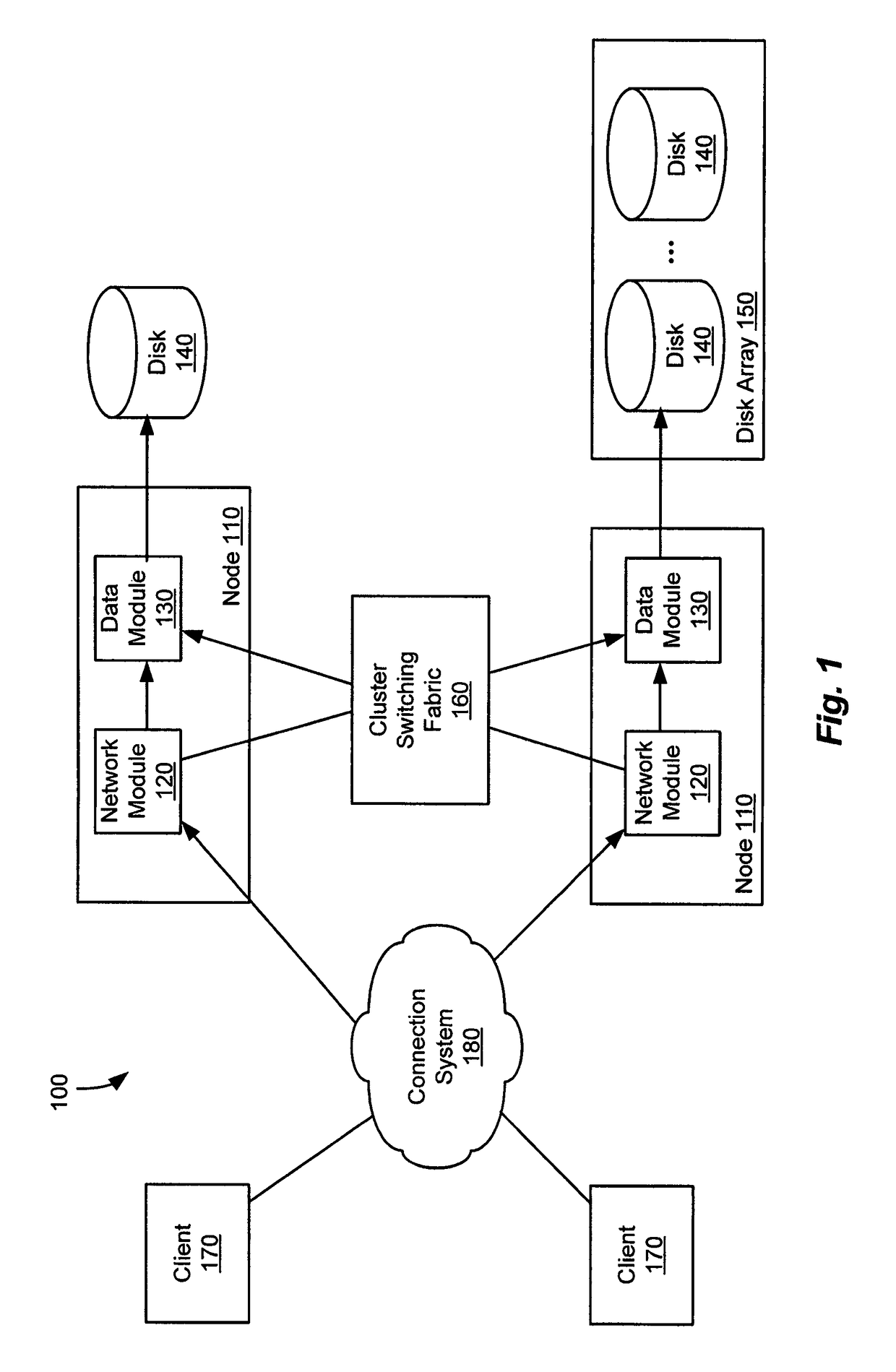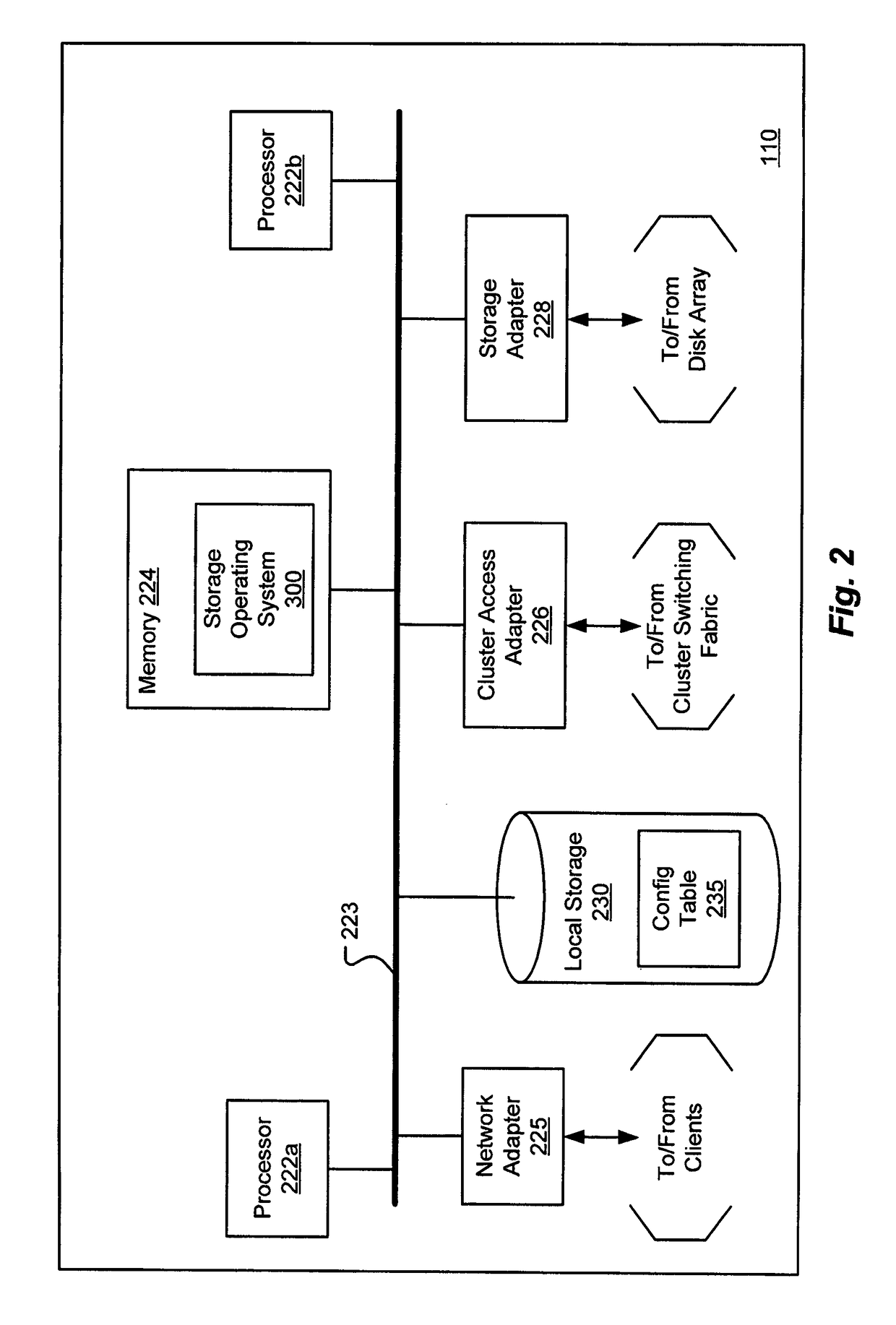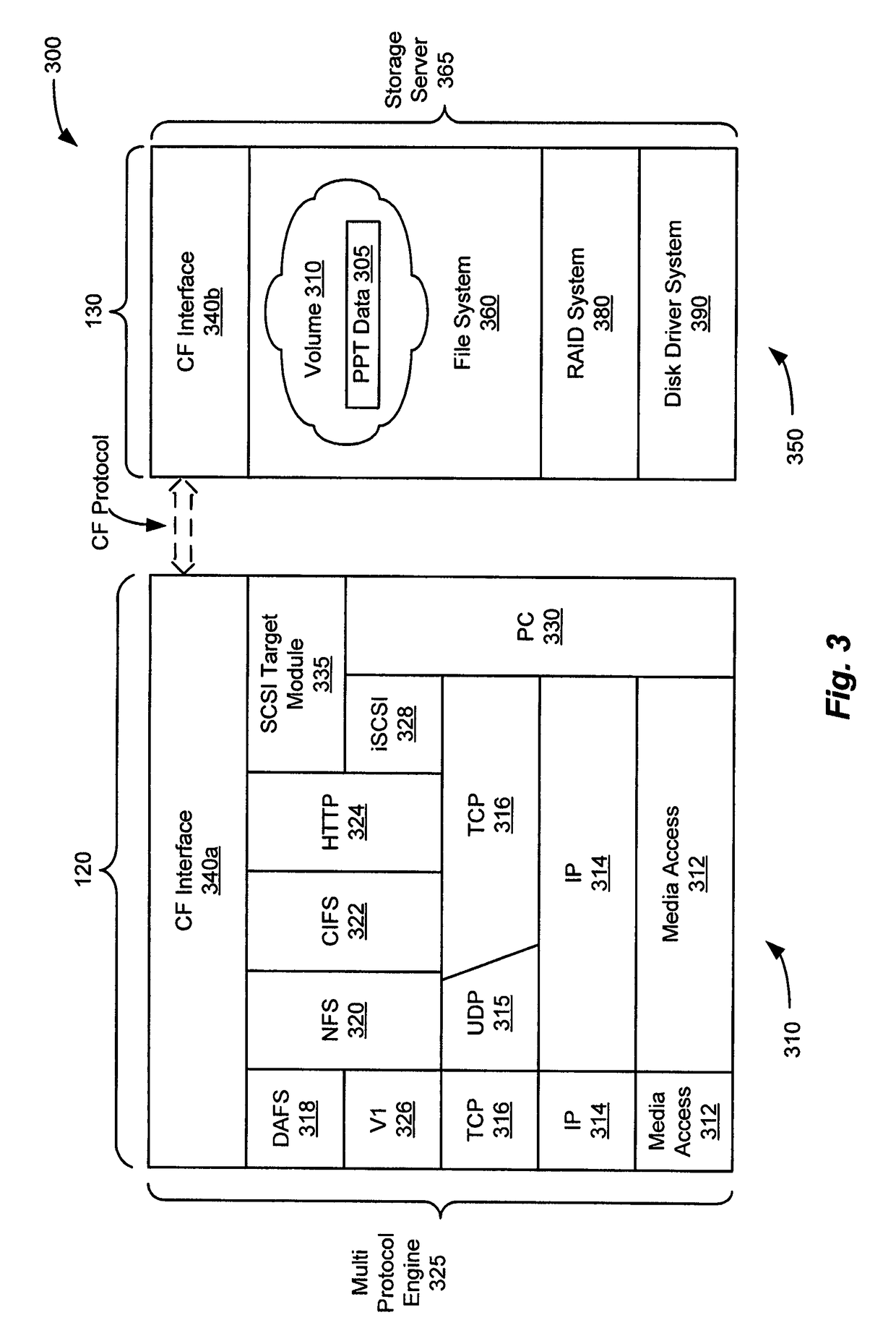[0026]In accordance with an exemplary embodiment of the present invention, the security filter may be implemented within a filter framework that provides a structured implementation of a
filter system for a file system. The filter framework may be implemented as a single binary that is “hooked into” or coupled to the filer in one or more of a variety of locations. A single binary
executable application is a stand-alone
instruction code that can be compiled as a separate module, for example. The locations for
hooking the filter framework include points in a
dataflow, such as at a
client interface, a protocol interface, a
network interface or a messaging interface for communicating with storage devices. The filter framework provides a
queue for each point at which the filter framework is coupled to the filer. The queues are maintained on a volume basis. The queues maintain filter call identifiers to enable filters to intercept data in the
data path for the point at which the filter framework is coupled to the filer. A filter controller is provided to capture request and responses for file system data and invoke applicable filters. The filter controller may invoke filters according to several different invocation models, including synchronous, asynchronous and asynchronous release configurations. The use of a synchronous model causes the filters associated with the filter controller to hold incoming I / O and block the calling thread until execution completes. An asynchronous configuration causes the filter to hold incoming I / O until execution completes, but releases the calling thread. The asynchronous release configuration causes the filter to execute without blocking incoming I / O or the calling thread.
[0028]The security filter may be loaded or unloaded in the filter framework. The security filter is arranged with other filters in a particular order for
callback operations, based on, for example, priority. A
callback represents instructions passed to the security filter for execution, often to call other procedures or functions. For example, a callback to the security filter may be in the form of a pointer to a function or procedure passed to the filter. The security filter can produce I / O operations, with each filter I / O being provided with a tag for identification. The filter I / O tagging permits the filter framework to identify the originating filter of the filter I / O. One
advantage to providing filter I / O tagging is to avoid conflicts that may occur with multiple I / O requests from a single filter source. In addition, filter I / O tagging contributes to permitting the filter framework to determine if the filter I / O has a particular priority, based on the filter priority. Filters with higher priority can potentially receive a greater time slice of available
processing time. Accordingly, by tagging the filter I / O, the filter framework can allocate
processing time to I / O requests more appropriately.
[0029]In an exemplary embodiment of the present invention, the filter framework includes an I / O map and an event map that contribute to determining when and how a registered filter should be called. The I / O map is a
data structure that holds identifiers for filters and I / O operations for which the filters are registered. The identifiers are used to provide the registered callbacks for the registered filters, while the event map provides information concerning when a particular callback is made. The event map is a
data structure that holds identifiers for filters and filter characteristics, such as an indication of whether a filter is a remote filter. A filter call results from an evaluation of an expression that involves information taken from the I / O map and the event map. The determination of when and how to call a filter can be advantageous when filter calls generate significant amounts of control traffic in the filter framework or filer.
[0034]The filter framework provides a number of features, including filter loading and unloading. A filter
loader registers a filter with the filter controller and identifies resources to be used for filter operations. The filter framework can freeze I / O during loading and unloading or starting and stopping a given filter. For example, the filter framework can maintain a buffer to permit filter related I / O to be halted and stored while the filter changes state, such as from “loaded” to “started.” The filter
loader also provides a counter for each filter to permit tracking of I / O operations in the event of a filter unload. The filter framework tracks filter I / O and completes
processing of the filter I / O prior to unloading. The counter maintained for each filter counts down to zero to indicate all I / O processing has been completed, and that the filter is ready for unloading. The filter
loader also provides I / O tagging, so that filter I / O requests and responses can be identified to avoid conflicts.
[0035]The present
filter system is not limited to file systems that include operating systems, but applies to storage systems in general. The security filter may be implemented within a file system, a driver for a storage system or in a storage device controller that causes the storage device to access the physical locations used to store data, for example. In general, the security filter is installed, configured and analyzed for security events, without significantly disrupting the flow of data to and from the storage device.
 Login to View More
Login to View More  Login to View More
Login to View More 


